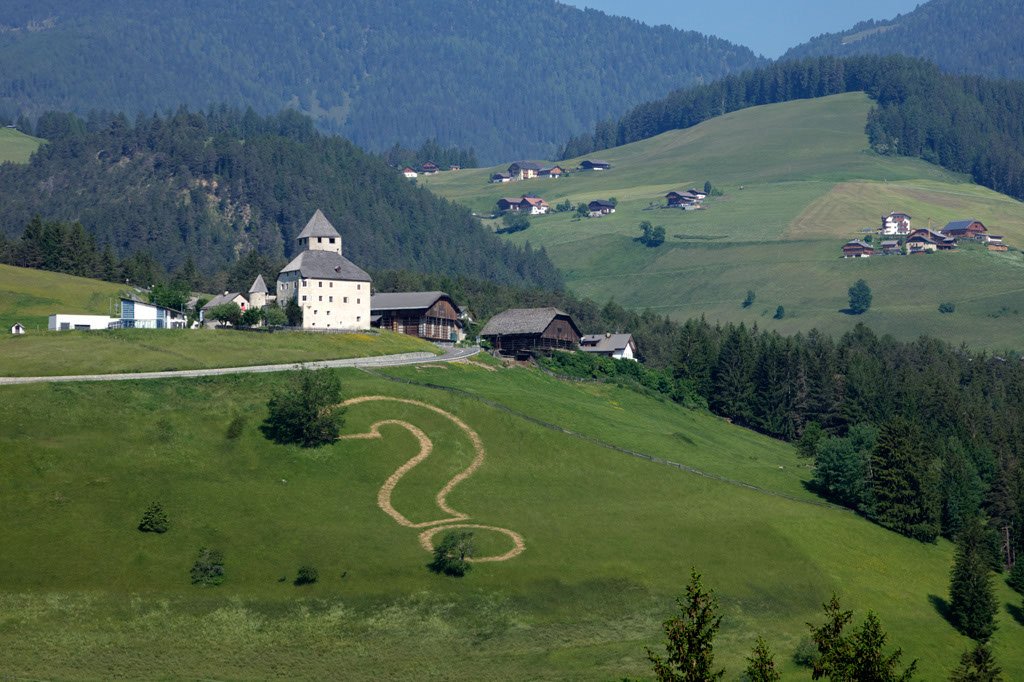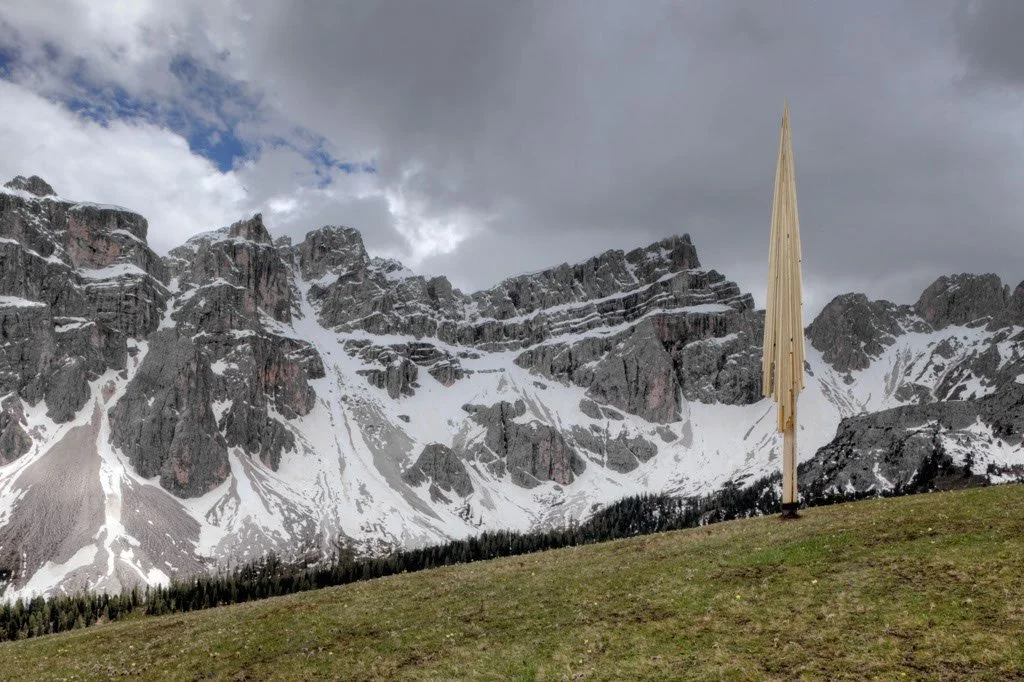?
Hubert Kostner
The grass was mowed around the silhouette of a big question mark. The grass will grow inside the point throughout the summer, while all around is mowed according to the rhythms of local agriculture. The work of Hubert Kostner raises questions about the nature, the environment, agriculture, tourism, memories, visions, instability and seasonality.

Exhibit place Ciastel de Tor
Studies have dated San Martin de Tor back to Roman times. A number of paths and the odd point found in what is now the town centre can be traced back to the practice of subdividing land into quadrilateral lots, which was typical of the era. Indeed, it is believed that the "quadra" portion of the word (square in Italian), which was initially used as a term for a surface, was then extended to the whole of the Val Badia valley (Gadertal in German). It was only later that the term "Gader" was introduced – originally "Kaidra" – which comes from a Roman measuring system adopted in this area. Today, the castle, which dates from the early 13th century, houses the "Museum Ladin".













